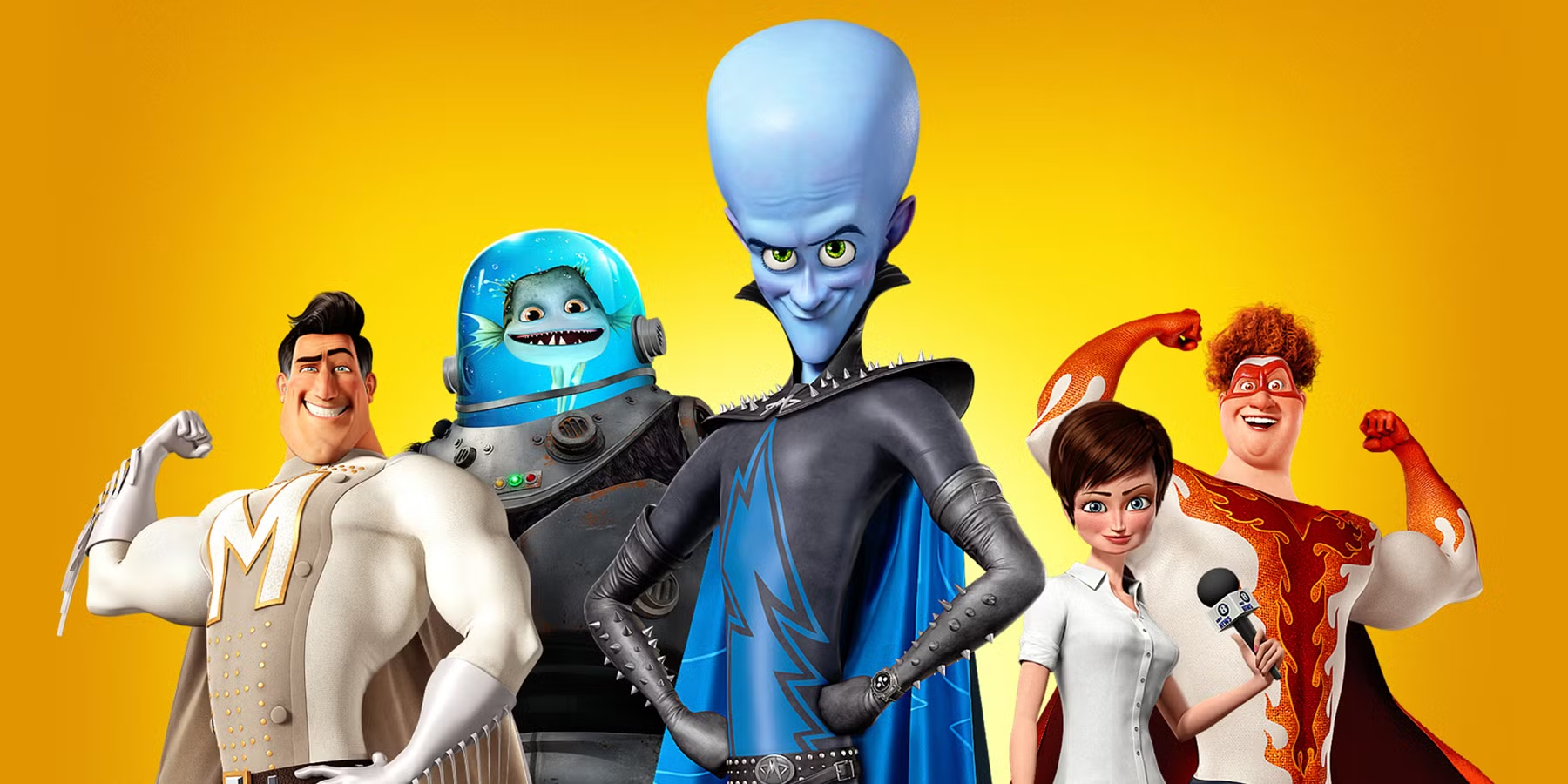Megamind The Animated Supervillain That Stole Our Hearts
As an avid animation enthusiast and self-proclaimed superhero movie buff, I’ve always been drawn to films that challenge the traditional hero-villain dynamic. Among these, one stands out as a true gem in the world of animated cinema: Megamind. Released in 2010, this DreamWorks Animation masterpiece has captivated audiences with its witty humor, stunning visuals, and heartfelt storytelling. In this deep dive, we’ll explore the world of Megamind, its impact on the animation industry, and why it continues to resonate with viewers of all ages.
Key Takeaways
- Megamind subverts traditional superhero tropes, offering a fresh perspective on the genre
- The film’s stellar voice cast, including Will Ferrell and Tina Fey, brings the characters to life
- Megamind’s journey from villain to hero explores themes of identity and self-discovery
- The movie’s stunning animation and visual style set it apart from other animated films of its time
- Despite its initial mixed reception, Megamind has gained a cult following and remains relevant today
The Genesis of Megamind
When I first heard about Megamind, I was intrigued by its premise. A supervillain as the protagonist? It seemed like a bold move, especially in 2010 when superhero movies were dominating the box office. But as I delved deeper into the film’s development, I realized that this unique perspective was exactly what made Megamind special.
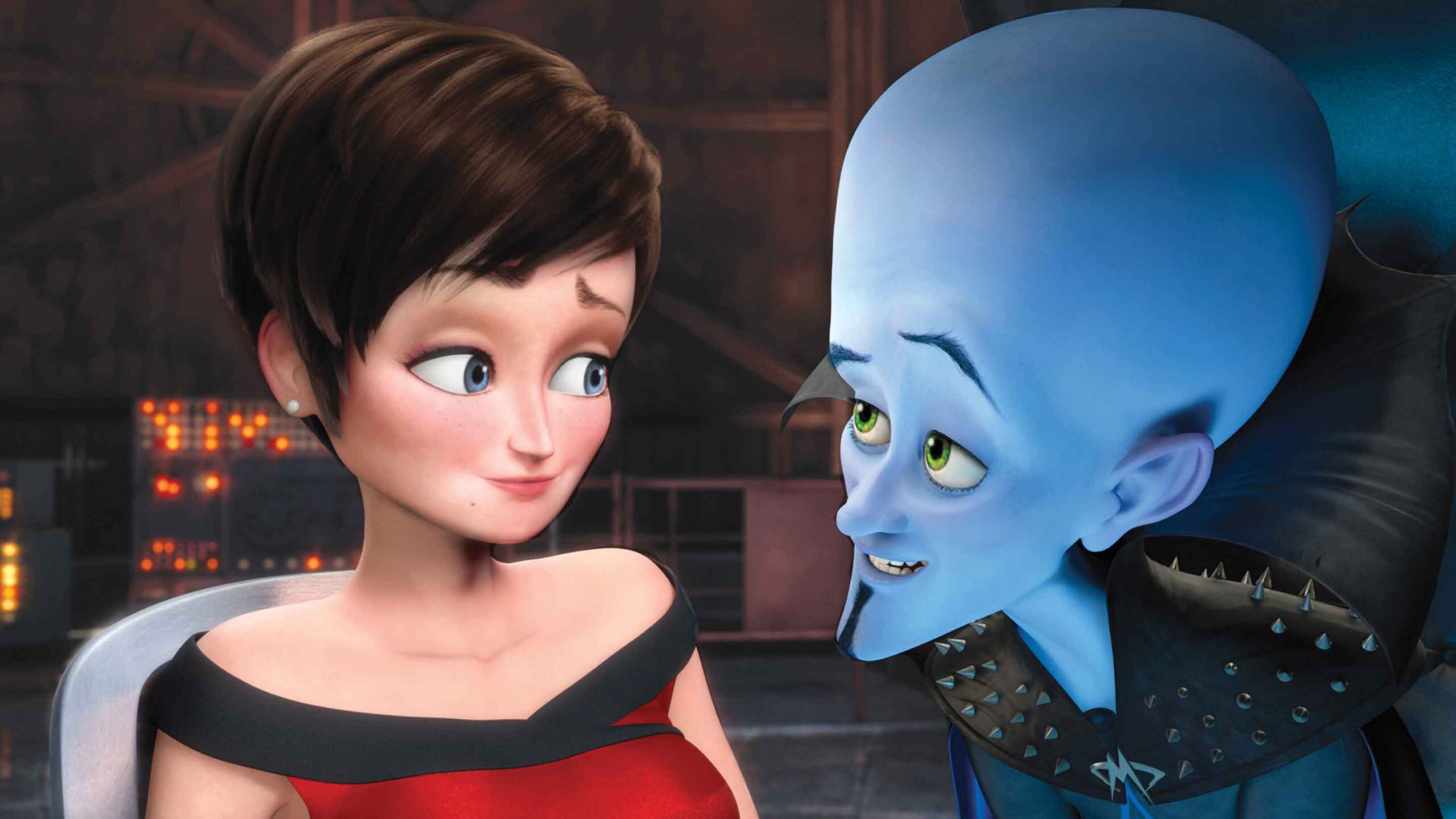
The concept for Megamind was born from the creative minds of Alan Schoolcraft and Brent Simons. Their original script, titled “Mastermind,” caught the attention of DreamWorks Animation, who saw the potential for a fresh take on the superhero genre. With director Tom McGrath at the helm, known for his work on the Madagascar franchise, the project began to take shape.
What fascinated me most about the development process was how the team approached the character of Megamind. They wanted to create a villain who was both comical and sympathetic, someone the audience could root for despite his villainous ways. This approach was a departure from the typical animated villain, and it’s one of the reasons why Megamind stands out in the crowded field of animated films.
A Star-Studded Voice Cast
One of the elements that truly elevates Megamind is its incredible voice cast. As someone who appreciates the nuances of voice acting, I was blown away by the talent assembled for this film. Let’s break down the main cast and their contributions:
- Will Ferrell as Megamind: Ferrell’s performance as the blue-skinned, big-headed alien is nothing short of brilliant. He brings a perfect blend of comedy and vulnerability to the role, making Megamind both hilarious and relatable.
- Tina Fey as Roxanne Ritchi: Fey’s sharp wit and timing make Roxanne more than just a damsel in distress. She’s a strong, intelligent character who holds her own against both hero and villain.
- Brad Pitt as Metro Man: Pitt’s smooth, charismatic performance perfectly captures the essence of the seemingly perfect superhero.
- Jonah Hill as Hal Stewart/Titan: Hill’s transformation from lovable loser to power-hungry villain is both comedic and chilling.
- David Cross as Minion: As Megamind’s faithful sidekick, Cross brings warmth and loyalty to the character, making Minion much more than just comic relief.
The chemistry between these actors is palpable, even in voice form. Their performances bring depth and nuance to the characters, elevating the film beyond a simple animated comedy.
The Plot: A Villain’s Journey to Heroism
At its core, Megamind is a story about finding one’s place in the world. The plot follows the titular character, a blue-skinned alien with a giant head and a penchant for villainy, as he finally defeats his long-time nemesis, Metro Man. But victory isn’t as sweet as Megamind imagined, and he soon finds himself lost without a hero to fight against.
What I find most compelling about this storyline is how it subverts our expectations. We’re used to seeing the hero triumph over the villain, but what happens when the villain wins? Megamind’s journey from celebrating his victory to realizing the emptiness of his achievement is both hilarious and poignant.
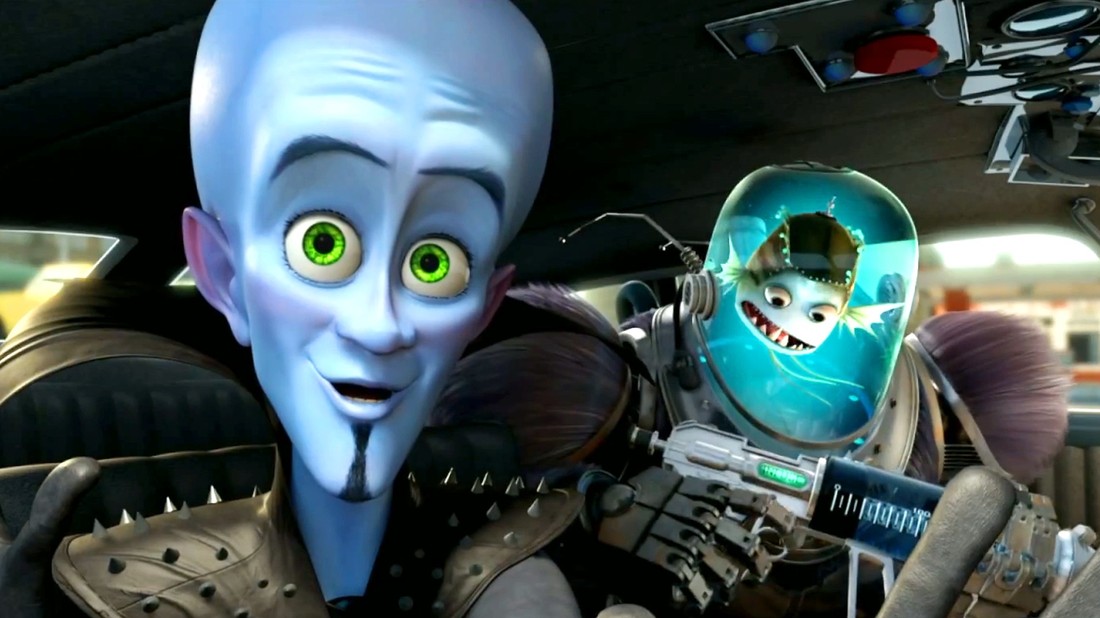
The introduction of Titan, a new hero created by Megamind himself, adds another layer of complexity to the story. As Titan turns to the dark side, Megamind is forced to confront his own beliefs about good and evil. This turn of events leads to one of my favorite aspects of the film: Megamind’s transformation from villain to hero.
Throughout the movie, we see Megamind grappling with his identity. Is he truly evil, or has he just been playing a role assigned to him since childhood? His gradual realization that he has the power to choose his own path is both empowering and touching. It’s a message that resonates with viewers of all ages, reminding us that we’re not defined by our past or others’ expectations of us.
Themes and Messages
As I’ve rewatched Megamind over the years, I’ve come to appreciate the depth of its themes and messages. On the surface, it’s a fun, action-packed animated film, but dig a little deeper, and you’ll find some profound ideas:
- Nature vs. Nurture: The film explores how our upbringing and environment shape us, but ultimately suggests that we have the power to choose our own path.
- The Importance of Purpose: Megamind’s existential crisis after defeating Metro Man highlights the need for purpose and meaning in our lives.
- Redemption and Second Chances: The movie shows that it’s never too late to change and that everyone deserves a second chance.
- The Complexity of Good and Evil: By blurring the lines between hero and villain, Megamind challenges our preconceptions about morality.
- The Power of Self-Belief: Megamind’s journey is ultimately about learning to believe in himself and his ability to do good.
These themes are woven seamlessly into the narrative, never feeling preachy or forced. It’s one of the reasons why Megamind appeals to both children and adults, offering different layers of meaning depending on the viewer’s age and perspective.
Visual Style and Animation
As an animation enthusiast, I’m always impressed by films that push the boundaries of visual storytelling. Megamind does this in spades, with a visual style that’s both unique and captivating. The film’s use of color is particularly striking, with Megamind’s blue skin and Metro City’s vibrant palette creating a world that feels both fantastical and grounded.
The character designs are another standout feature. Megamind’s exaggerated proportions and expressive face allow for some truly hilarious moments, while still allowing for emotional depth when needed. The contrast between Megamind’s lanky frame and Metro Man’s chiseled physique visually reinforces their roles as villain and hero, making their eventual role reversal all the more impactful.
The animation itself is smooth and dynamic, particularly during the action sequences. The battle scenes between Megamind and Metro Man are a visual feast, with clever use of slow-motion and dynamic camera angles that make you feel like you’re right in the middle of the action. I’m particularly fond of the scene where Megamind disguises himself as Space Dad, with the subtle facial animations adding an extra layer of humor to Will Ferrell’s already hilarious performance.
One aspect of the animation that often goes unnoticed is the attention to detail in the background characters and settings. Metro City feels like a living, breathing place, with each citizen having their own unique design and personality. This level of care in the world-building adds depth to the film and makes repeat viewings rewarding as you notice new details each time.
The Music of Megamind
No discussion of Megamind would be complete without mentioning its fantastic soundtrack. Composed by Hans Zimmer and Lorne Balfe, the music of Megamind perfectly captures the film’s blend of action, comedy, and heart. The score switches seamlessly from grandiose, superhero-style themes to more intimate, emotional pieces as the story demands.
One of my favorite musical moments in the film is the use of AC/DC’s “Highway to Hell” during Megamind’s takeover of Metro City. This inspired choice of licensed music not only fits the scene perfectly but also adds to Megamind’s character, showing his flair for the dramatic.
The original songs created for the film, particularly “Bad” by Michael Jackson, which serves as Megamind’s personal theme, are cleverly integrated into the story. They add another layer of humor and character development, enhancing the overall viewing experience.
Reception and Legacy
When Megamind was first released in 2010, it received generally positive reviews from critics. However, its box office performance was somewhat overshadowed by other animated releases that year, such as Toy Story 3 and How to Train Your Dragon. As someone who saw the film in theaters, I remember feeling that it was underappreciated at the time.
However, in the years since its release, Megamind has gained a strong cult following. Its clever writing, memorable characters, and timeless themes have allowed it to age remarkably well. In fact, I’d argue that the film’s exploration of the nature of heroism and villainy feels even more relevant today, in an era where superhero movies dominate the box office and we’re increasingly questioning traditional notions of good and evil.
The film’s influence can be seen in subsequent animated movies that play with superhero tropes, such as The Incredibles 2 and Spider-Man: Into the Spider-Verse. While Megamind may not have spawned a franchise like some of its contemporaries, its impact on the animation industry and popular culture is undeniable.
Megamind in Popular Culture
Since its release, Megamind has left an indelible mark on popular culture. The film’s quotable lines and memorable scenes have become fodder for memes and internet jokes, keeping it relevant even years after its initial release. Who can forget Megamind’s iconic “Oh, you’re a villain alright, just not a super one!” exchange?
The character of Megamind himself has become something of an unlikely icon. His journey from misunderstood villain to reluctant hero resonates with many viewers, particularly those who feel like outsiders. I’ve seen countless fan arts, cosplays, and even tattoos inspired by Megamind, testament to the character’s enduring appeal.
One of the most interesting aspects of Megamind’s cultural impact is how it’s sparked discussions about the nature of villainy and heroism in fiction. The film’s nuanced portrayal of its characters has led to countless online debates and analyses, with viewers dissecting the motivations and actions of Megamind, Metro Man, and Titan.
Comparison to Other Animated Supervillain Movies
While Megamind wasn’t the first animated film to focus on a villain protagonist, it certainly stands out in the genre. Let’s compare it to some other notable entries in this category:
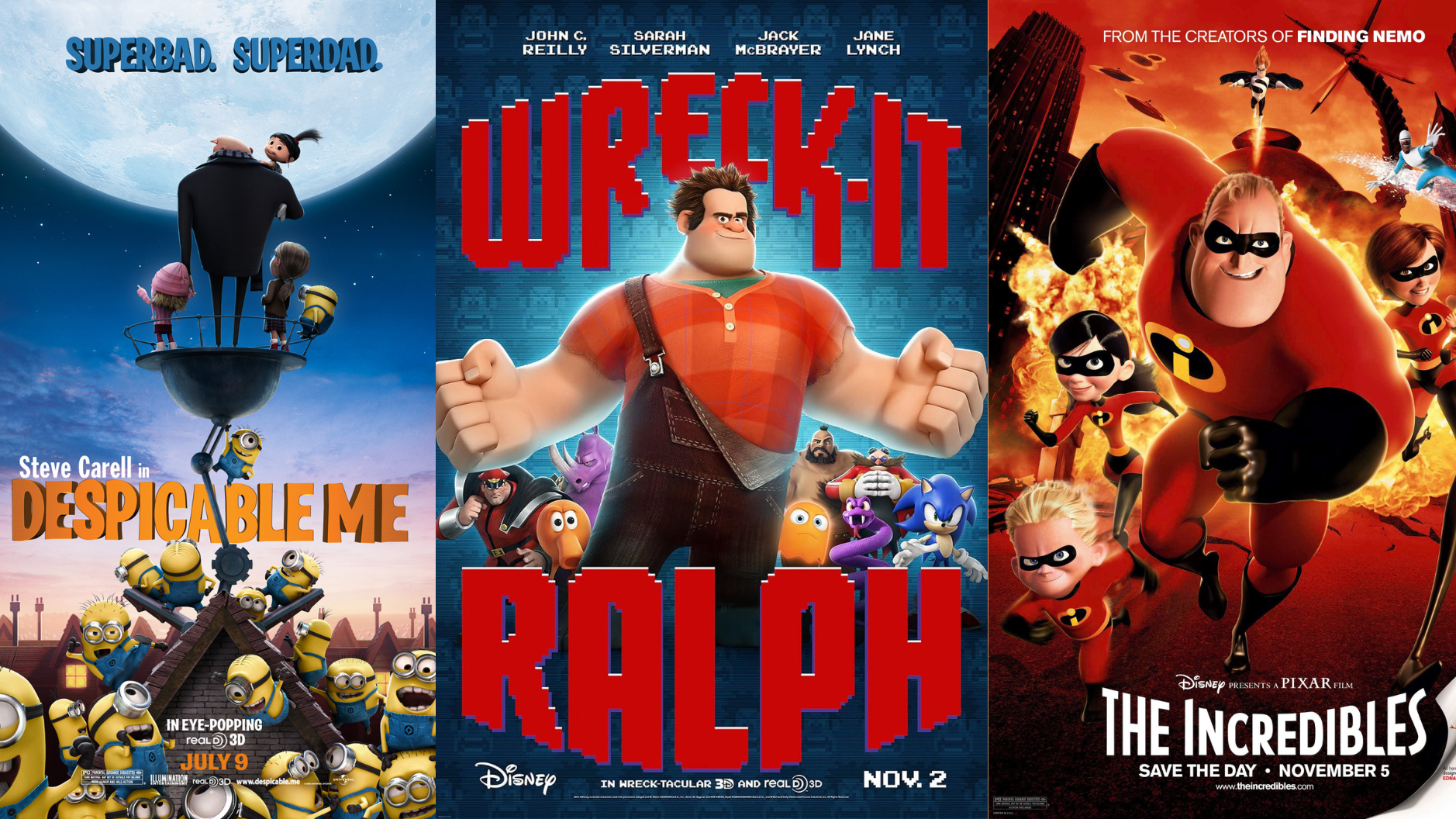
- Despicable Me (2010): Released the same year as Megamind, Despicable Me also features a villain protagonist who undergoes a change of heart. However, where Gru’s transformation is driven by his relationship with the girls he adopts, Megamind’s journey is more introspective, focusing on his search for purpose and identity.
- Wreck-It Ralph (2012): While not strictly a supervillain movie, Wreck-It Ralph explores similar themes of a “bad guy” questioning his role. However, Ralph’s journey is more about acceptance and understanding his importance, while Megamind actively chooses to change his ways.
- The Incredibles (2004): While not centered on a villain, The Incredibles does feature Syndrome, a villain with a similar backstory to Megamind (rejected by their hero, turned to villainy). However, Megamind takes this concept further by making the villain the protagonist and exploring his redemption.
In my opinion, what sets Megamind apart is its willingness to fully commit to its premise. Unlike some other films in this genre, Megamind doesn’t shy away from its protagonist’s villainy, instead using it as a starting point for a compelling character arc.
The Art of Character Development
One of the aspects of Megamind that I find most impressive is its character development. Each character in the film undergoes significant growth and change, adding depth to the story and making the viewing experience more rewarding.
Megamind’s arc is, of course, the most prominent. He starts as a comically inept villain, driven by a lifetime of rejection and a belief that evil is his destiny. Throughout the film, we see him grapple with his identity, question his choices, and ultimately find the hero within himself. It’s a transformation that feels earned and authentic, thanks to the film’s careful pacing and Will Ferrell’s nuanced voice performance.
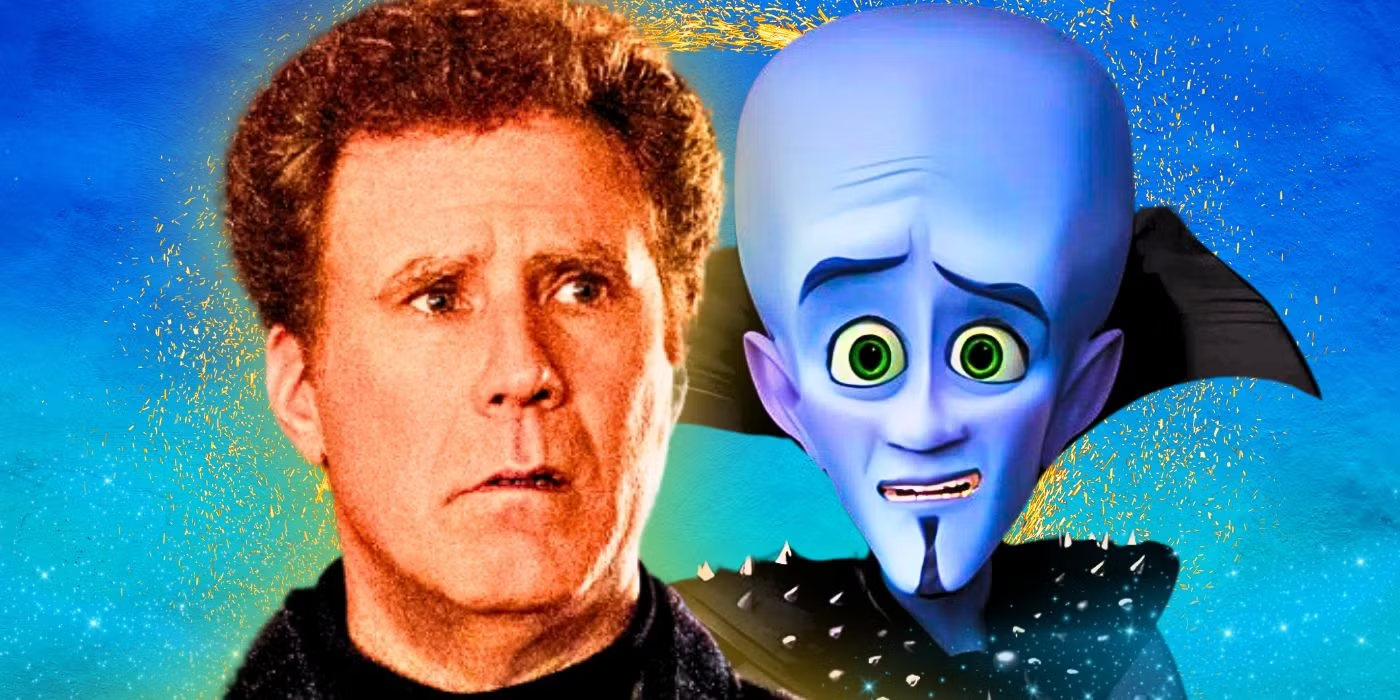
Roxanne Ritchi’s character development is equally impressive, albeit more subtle. She begins as the typical damsel in distress but quickly subverts this trope. Her intelligence, bravery, and refusal to be a passive participant in Megamind’s schemes make her a standout character. As the film progresses, we see her perceptions of both Megamind and Metro Man change, mirroring the audience’s journey.
Even secondary characters like Minion and Metro Man show growth. Minion’s unwavering loyalty to Megamind is tested when he disagrees with his master’s choices, leading to some touching moments of conflict and reconciliation. Metro Man’s revelation about his own unhappiness with his predestined role adds another layer to the film’s exploration of identity and self-determination.
The Humor of Megamind
One of the elements that makes Megamind so enjoyable is its clever, multi-layered humor. The film manages to balance slapstick comedy that appeals to younger viewers with more sophisticated jokes and pop culture references that adults can appreciate.

Megamind’s mispronunciations (like “shool” for “school” and “meloncolly” for “melancholy”) are a running gag that never fails to make me chuckle. These linguistic quirks not only provide laughs but also give insight into Megamind’s character, hinting at his isolated upbringing and desire to appear more intelligent than he is.
The film also excels at visual humor. The contrast between Megamind’s dramatic villainy and the often mundane reactions of Metro City’s citizens is a constant source of amusement. I particularly love the scene where Megamind is rampaging through the city in a giant robot, only to pause politely at a red light.
But what I appreciate most about Megamind’s humor is how it’s used to subvert superhero tropes. The film pokes fun at everything from dramatic origin stories to over-the-top battle sequences, all while telling its own compelling narrative. This self-awareness adds an extra layer of enjoyment for viewers familiar with the superhero genre.
The Supporting Cast
While Megamind, Roxanne, and Metro Man (later Titan) form the core of the story, the supporting characters in the film deserve recognition for their contributions to the narrative and overall enjoyment of the movie.
Minion, voiced by David Cross, is more than just a sidekick. His unwavering loyalty to Megamind, even when he disagrees with his boss’s decisions, provides some of the film’s most heartfelt moments. The dynamic between Megamind and Minion is one of the movie’s strengths, showing a friendship that transcends the typical master-servant relationship often seen in villain narratives.
The Warden, though a minor character, plays a crucial role in Megamind’s backstory and provides some of the film’s funniest moments. His exasperation with Megamind’s repeated escapes and disguises is always good for a laugh.
Even background characters, like the citizens of Metro City, add depth to the world of Megamind. Their reactions to the ongoing hero-villain conflict, from jaded acceptance to genuine fear and eventually to acceptance of Megamind, help to ground the fantastical elements of the story in a relatable reality.
The Animation Technology Behind Megamind
As someone fascinated by the technical aspects of animation, I find the technology used in Megamind particularly interesting. The film was produced using DreamWorks’ proprietary animation software, which allowed for incredibly detailed character models and environments.
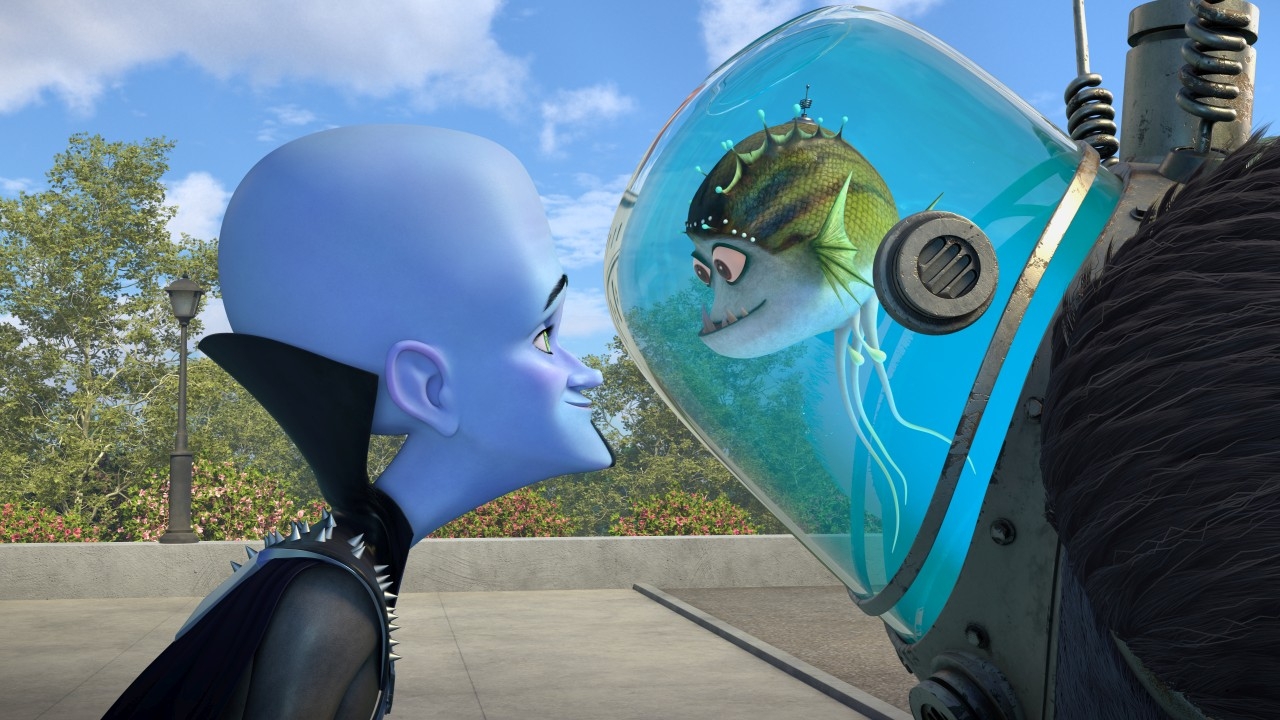
One of the most impressive technical achievements in Megamind is the rendering of Megamind’s cape. Cloth simulation is notoriously difficult in animation, but the team at DreamWorks managed to create a cape that moves fluidly and naturally, adding to Megamind’s dramatic flair.
The film also makes excellent use of lighting and special effects. The contrast between the dark, moody atmosphere of Megamind’s lair and the bright, sunlit streets of Metro City helps to visually reinforce the themes of the movie. The various gadgets and inventions used by Megamind are brought to life with vibrant, eye-catching effects that add to the film’s visual appeal.
Megamind’s Place in DreamWorks Animation History
As I reflect on Megamind’s place in the DreamWorks Animation canon, I can’t help but appreciate its unique contribution to the studio’s legacy. DreamWorks has always been known for its willingness to take risks and push boundaries in animated storytelling, and Megamind is a perfect example of this approach.
Released in 2010, Megamind came at an interesting time for DreamWorks. The studio had already established itself with franchises like Shrek and Madagascar, but was also starting to explore more diverse storytelling with films like Kung Fu Panda and How to Train Your Dragon. In this context, Megamind represents a bold step into more complex, nuanced storytelling within the superhero genre.
What sets Megamind apart from many of its DreamWorks contemporaries is its willingness to tackle more mature themes while still maintaining the humor and heart that the studio is known for. The film’s exploration of identity, purpose, and the nature of good and evil adds a layer of depth that elevates it beyond a simple comedy or action film.
In terms of animation style, Megamind showcases DreamWorks’ evolving capabilities. The film’s vibrant color palette, dynamic action sequences, and expressive character animations represent a step forward in the studio’s technical prowess. Particularly noteworthy is the attention to detail in Megamind’s gadgets and inventions, which bring a steampunk-esque flair to the superhero genre.
While Megamind may not have spawned a franchise like some of DreamWorks’ other properties, its influence can be seen in the studio’s subsequent works. The film’s blend of humor, heart, and action, along with its willingness to subvert genre expectations, has become something of a trademark for DreamWorks Animation.
The Voice Acting Performances in Megamind
I’ve touched on the stellar voice cast earlier, but I think it’s worth diving deeper into the performances that bring these characters to life. Voice acting is an art form that often doesn’t get the recognition it deserves, and Megamind is a masterclass in how great voice performances can elevate an animated film.
Will Ferrell’s performance as Megamind is, in my opinion, one of the best of his career. He brings a perfect blend of comedic timing and emotional depth to the role. Ferrell’s ability to switch from grandiose villain mode to moments of vulnerability and self-doubt is truly impressive. His delivery of lines like “Oh, you’re a villain alright, just not a super one!” has become iconic, but it’s in the quieter moments, like Megamind’s realization that he misses Minion, where Ferrell’s performance really shines.
Tina Fey brings her trademark wit and charm to the role of Roxanne Ritchi. What I love about Fey’s performance is how she makes Roxanne more than just a love interest or damsel in distress. There’s a sharpness and intelligence to her delivery that makes Roxanne feel like a fully realized character with her own agency.
Brad Pitt’s Metro Man is another standout performance. Pitt perfectly captures the smug self-assurance of the seemingly perfect hero, but also brings depth to the character when Metro Man reveals his own insecurities and desire for a different life.
Jonah Hill’s transformation from the lovable loser Hal to the menacing Titan is particularly impressive. Hill manages to make Hal sympathetic despite his flaws, which makes his turn to villainy all the more impactful.
David Cross deserves special mention for his performance as Minion. Cross brings warmth and loyalty to the character, making Minion much more than just comic relief. His scenes with Ferrell’s Megamind’s showcase a genuine friendship that adds heart to the film.
The Cinematography of Megamind
While we don’t often think about cinematography in animated films, the “camera work” in Megamind is worth discussing. The film uses dynamic camera movements and interesting angles to enhance its storytelling and action sequences.
One of my favorite examples is the scene where Megamind’s first takes over Metro City. The camera swoops and zooms through the city, giving us a sense of Megamind’s newfound power and the scale of his conquest. This sequence also showcases the film’s excellent use of depth and perspective, creating a three-dimensional world that feels alive and immersive.
The film also uses more subtle camera techniques to enhance its emotional moments. During Megamind’s conversations with Roxanne (disguised as Bernard), the camera often lingers on close-ups, allowing us to see the subtle changes in Megamind’s expressions as he begins to question his villainous ways.
Action sequences in Megamind are particularly well-shot. The battles between Megamind’s and Metro Man (and later Titan) use dynamic camera movements that heighten the excitement and make you feel like you’re right in the middle of the action. Slow-motion effects are used sparingly but effectively, highlighting key moments in these battles.
The World-Building in Megamind
One aspect of Megamind that I find particularly impressive is its world-building. The film creates a rich, detailed universe that feels both fantastical and grounded in reality.
Metro City itself is a character in its own right. The film’s designers have created a bustling metropolis that feels lived-in and real, despite its cartoonish elements. From the towering skyscrapers to the smallest details in shop windows, every part of Metro City feels thoughtfully designed.
Megamind’s lair is another triumph of world-building. It’s the perfect reflection of its owner’s personality – grandiose and theatrical, but with an underlying sense of loneliness. The contrast between the high-tech gadgetry and the more mundane elements (like Megamind’s idea cloud made of actual paper) adds depth to Megamind’s character.
The film also does an excellent job of establishing the history of its world. Through flashbacks and exposition, we learn about Megamind’s origin, his long-standing rivalry with Metro Man, and the dynamics of Metro City. This backstory is woven seamlessly into the narrative, never feeling like an info dump.
The Themes of Identity and Self-Discovery in Megamind
At its core, Megamind is a story about identity and self-discovery. This theme resonates throughout the film, not just in Megamind’s journey, but in the arcs of several other characters as well.
Megamind’s struggle with his identity is the heart of the film. From his childhood, he’s been labeled as the “bad boy,” a role he embraces because it’s the only one he knows. His journey involves questioning this identity and ultimately realizing that he has the power to choose who he wants to be.
This theme is mirrored in Metro Man’s arc. Despite seeming perfect and content, Metro Man reveals that he’s been trapped by others’ expectations of him. His decision to fake his death and pursue a new life as Music Man is a powerful statement about the importance of being true to oneself.
Even Hal’s transformation into Titan touches on this theme. Given superpowers, Hal chooses to become a villain, revealing the darkness that was always within him. This serves as a counterpoint to Megamind’s journey, showing that true heroism comes from within, not from external powers or expectations.
Roxanne’s character arc also involves a journey of self-discovery. She moves from seeing the world in black and white (hero vs. villain) to recognizing the complexity of individuals and the potential for change.
The Legacy of Megamind
As we approach the film’s 15th anniversary, it’s worth considering the lasting impact of Megamind on animation and popular culture.
In the years since its release, we’ve seen a trend in both animated and live-action films towards more complex, nuanced portrayals of villains. While Megamind wasn’t the first to humanize its villain protagonist, its approach to the character’s redemption arc was particularly well-executed and influential.
The film’s subversion of superhero tropes has also aged well. In an era dominated by Marvel and DC blockbusters, Megamind’s playful deconstruction of superhero narratives feels more relevant than ever. Its exploration of what happens after the villain wins predates similar themes in more recent superhero media.
Megamind’s influence can be seen in subsequent animated films that play with genre expectations and feature morally complex protagonists. Movies like Wreck-It Ralph, Zootopia, and even DreamWorks’ own Kung Fu Panda series share DNA with Megamind in their exploration of identity and the blurring of traditional hero-villain dynamics.
In the realm of internet culture, Megamind has found new life as a source of memes and reaction images. The film’s quotable lines and expressive animation have made it a favorite among online communities, introducing it to new audiences years after its initial release.
Megamind: A Film Ahead of Its Time
Looking back, I can’t help but feel that Megamind was somewhat ahead of its time. Its clever subversion of superhero tropes and exploration of complex themes were perhaps a bit too sophisticated for audiences in 2010, when the superhero genre was still in its earlier stages.
Today, in a world where superhero fatigue is a real phenomenon and audiences are craving more nuanced takes on the genre, Megamind feels fresher and more relevant than ever. Its message about choosing your own identity and the power of redemption resonates strongly in our current cultural climate.
The film’s humor, too, has aged remarkably well. Unlike some comedies that rely heavily on pop culture references, Megamind’s wit comes from its characters and situations, allowing it to remain funny and engaging years after its release.
As we wrap up this deep dive into Megamind, I’m struck by how much there is to appreciate about this film. From its clever script and outstanding voice performances to its stunning animation and thoughtful themes, Megamind is a film that rewards repeated viewings and deeper analysis.
What makes Megamind truly special, in my opinion, is its heart. Beneath the comedy and action lies a touching story about finding one’s place in the world and the power of second chances. It’s a film that encourages us to look beyond labels and expectations, to recognize the potential for good in others and in ourselves.
Whether you’re a long-time fan or someone who’s never given Megamind a chance, I encourage you to watch (or rewatch) this animated gem. In a world of predictable superhero narratives, Megamind stands out as a truly original and emotionally resonant take on the genre.
So here’s to Megamind – the supervillain who became a hero, both in his world and in ours. In the words of the big-headed blue guy himself: “Let’s get this party started!”

